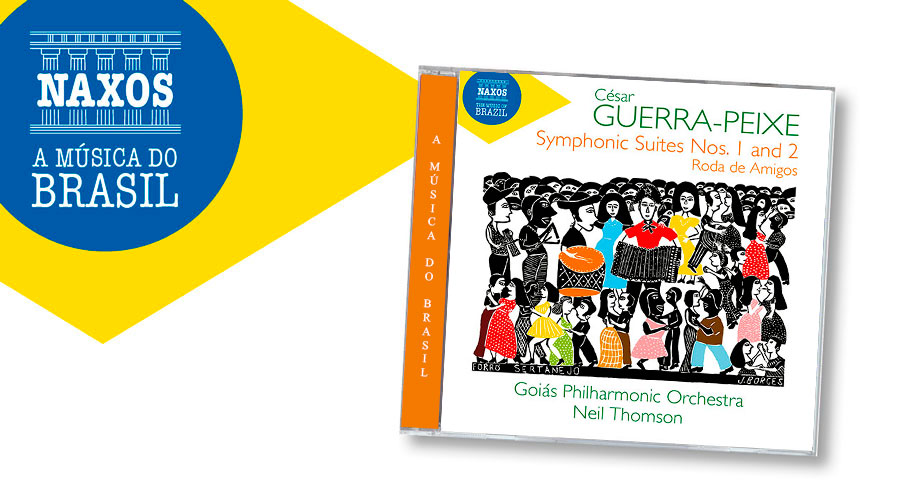
Guerra-Peixe
Suítes sinfônicas nº 1 e nº 2 / Roda de amigos
Orquestra Filarmônica de Goiás
Neil Thomson – regente
No futuro será possível olhar para a coleção Música do Brasil do selo Naxos e ter a dimensão completa da sua contribuição para a criação musical do país. A cada lançamento, já dá para perceber que o resgate de alguns compositores – ou apenas a disponibilização de gravações de obras de autores mais conhecidos – é uma de suas marcas. É o caso de César Guerra-Peixe. Seu trajeto como autor, abordando diferentes caminhos estéticos, é simbólico da música brasileira do século XX, assim como seu trabalho como arranjador e autor de trilhas para televisão e cinema revela um conhecimento profundo da orquestra. Seja pela qualidade no manejo da orquestra, seja pelo manancial de ideias musicais que carregam, obras como suas suítes sinfônicas mereciam gravações comerciais de qualidade. E acabaram de ganhar, neste disco brilhante da Filarmônica de Goiás e do maestro Neil Thomson, cujo fascínio pela música do compositor foi o início de sua relação com a música brasileira, que só parece crescer. Chama atenção no registro o equilíbrio obtido pelos naipes da filarmônica, em interpretações bem-acabadas como as peças merecem. De bônus, Roda de amigos, com músicos do grupo nos levando ao meio da vida musical carioca da segunda metade do século XX: cada instrumento, afinal, é uma homenagem a um artista que Guerra-Peixe admirava. Uma grande festa musical.
Clique AQUI para comprar na Loja CLÁSSICOS
Clique AQUI para ouvir no Spotify
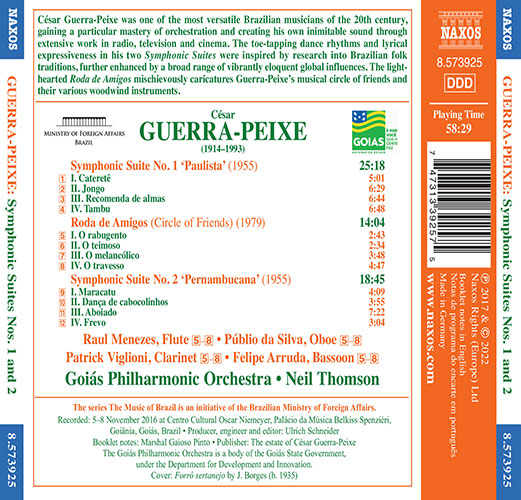
Texto do encarte do CD
Nascido em Petrópolis, em 1914, César Guerra-Peixe foi um dos músicos mais completos do Brasil no século XX: compositor, violinista, regente, professor, pesquisador de folclore e arranjador de música popular, com extenso trabalho em rádio, televisão e cinema, o que lhe deu um domínio particular da orquestração e lhe permitiu criar uma sonoridade única e inconfundível no panorama da música brasileira. Deixou extensa obra para diversas formações instrumentais e vocais; no entanto, é na música sinfônica que a força artística de Guerra-Peixe se faz sentir de forma mais evidente. Na década de 1940, após concluir os estudos de composição e violino no Rio de Janeiro, Guerra-Peixe associa-se ao movimento Música Viva, que reunia jovens músicos em torno do professor Hans-Joachim Koellreutter, precursor do dodecafonismo no Brasil; decepcionado com a técnica, porém, Guerra-Peixe abandona o grupo e mudase para Recife, onde empreende extensa pesquisa folclórica. Em 1953, transfere-se para São Paulo, onde, em 1955, compõe as duas Suítes Sinfônicas, inspiradas pelo folclore dessas duas regiões. As Suítes Sinfônicas foram frutos de um mesmo impulso criativo, tendo ambas a mesma estrutura em quatro movimentos: o primeiro é uma dança em andamento moderado, o terceiro é um movimento lírico, e o segundo e o quarto são danças em andamentos rápidos. Os movimentos equilibram inspiração ameríndia, afro-brasileira e “ocidental” no sentido mais flexível do termo, incluindo aí manifestações ibéricas e da cultura brasileira urbana, no que pode ser lido como referência ao mito das três raças formadoras do Brasil.
A Suíte Sinfônica Nº 1, “Paulista”, foi dedicada a Edoardo de Guarnieri, responsável pela estreia da obra à frente da Orquestra Sinfônica Municipal de São Paulo em 1956. O primeiro movimento, “Cateretê”, inspira-se na dança de mesmo nome, provavelmente de origem indígena, encontrada em toda a região Centro-Sul do Brasil. Alterna seções de um canto mais livre, quase recitativo, com seções ritmadas, em que os participantes marcam o ritmo com palmas e os pés. Guerra-Peixe estrutura esse movimento a partir desses contrastes: na seção ritmada, que é a mais característica do cateretê, o bater de palmas e pés é engenhosamente orquestrado para cordas e metais, em vez do mais óbvio uso de instrumentos de percussão. Já nas seções originalmente vocais, o canto é destinado aos pares de instrumentos de madeira. O andamento mais lento e as sucessivas mudanças de compasso resultam em um caráter mais livre, quase recitativo das frases musicais. O jongo é uma dança de origem afro-brasileira, similar ao samba. No Estado de São Paulo, o jongo é conhecido como “tambu”, nome dado também a um dos tambores usados no próprio jongo e em outros batuques. A coreografia do jongo/tambu apresenta elementos de roda e muitas vezes incluem a “umbigada”, um passo em que um casal realiza um movimento no qual o umbigo de um toca o do outro. É interessante que Guerra-Peixe tenha dedicado dois movimentos da suíte ao jongo/tambu: difícil saber se um se refere à dança (“Jongo”, segundo movimento) e o outro ao instrumento (“Tambu”, quarto movimento) ou se ele considerava os termos não como sinônimos, mas como indicativos de danças distintas. Em contraste aos outros três movimentos, a “Recomenda de Almas” recria uma das mais sombrias cerimônias paralitúrgicas do catolicismo popular. Trata-se de uma procissão realizada por homens nas noites de sexta-feira durante a quaresma com o intuito de rezar pelas almas dos condenados à morte, dos perdidos nas matas e dos mortos sem confissão. Tradicionalmente, o cortejo seguia pelas ruas, parando em pontos como cemitérios, cruzeiros e encruzilhadas, onde se faziam orações e se cantavam motetos ou ladainhas. O movimento se inicia com cordas no registro grave e em andamento lento, referência manifesta ao caminhar dos homens à meia-noite. À sombria sonoridade das cordas no grave, o compositor contrapõe melodias estranhamente agudas – os solos de flauta e flautim, trombones e trompetes com surdina, este último acompanhado de celesta, parecem existir em um mundo diferente daquele em que estão os seus acompanhamentos.
A Suíte Sinfônica Nº 2, “Pernambucana”, foi dedicada ao maestro Eleazar de Carvalho. A suíte se abre com o “Maracatu”, uma dança afro-brasileira que, na sua origem, é um tipo de cortejo religioso. Geralmente de andamento rápido, adota um andamento mais lento e solene quando tocada em frente a igrejas. Guerra-Peixe interessou-se profundamente pelo maracatu, tendo escrito também em 1955 um livro de referência sobre o tema (“Maracatus do Recife”). Com o propósito de garantir a acentuação correta da dança, o compositor descreve em minúcias a maneira de se tocar os instrumentos de percussão. As seções mais ritmadas, em que toda a orquestra soa como um grande conjunto de percussão, são contrastadas com passagens líricas, nas quais ganham relevância os violinos e os instrumentos de madeira. Guerra-Peixe considerava os “Cabocolinhos”, que inspiram o segundo movimento, como a manifestação mais original encontrada no carnaval de Recife. “Caboclo” é o termo designado para se referir aos filhos de brancos com índios. Não se sabe hoje ao certo em que medida os cabocolinhos têm sua origem na música e na dança indígenas, ou se são apenas representações da cultura ameríndia pela cultura brasileira urbana. A música propriamente dita, em andamento rápido, estrutura-se a partir de dois elementos contrastantes: o melódico, confiado a dois instrumentos de sopro de registro agudo, similares a uma pequena flauta e chamados de “inúbia”, e o acompanhamento contínuo do conjunto de percussão, composto de chocalho ou recoreco, caixa e surdo. Esses elementos foram integralmente transportados para a escrita sinfônica e são facilmente reconhecíveis neste movimento. O terceiro movimento, “Aboiado”, faz o contraste com os dois anteriores. “Aboio” é um tipo de canto de trabalho associado à criação de bovinos. Cantos desse tipo são encontrados em grande parte do mundo; no Brasil, foram mais cultivados nas regiões Centro-Oeste e Nordeste. O aboio caracteriza-se pelo ritmo livre de frases lentas, sem qualquer acompanhamento. Diferente da maioria dos cantos populares, ele é desprovido de texto, configurando-se numa espécie de melisma de feição solitária e melancólica, que Guerra-Peixe reproduz neste movimento com cuidadosa instrumentação, evitando os extremos, tanto graves quanto agudos, e favorecendo as regiões médias de instrumentos como violas, violoncelos e fagotes, que correspondem à tessitura vocal dos vaqueiros cantadores de aboio. De todas as danças presentes nas Suítes Sinfônicas de Guerra-Peixe, a que chega com maior disseminação ao século XXI é o frevo, um tipo de marcha em andamento rápido e caráter festivo muito popular no carnaval pernambucano, com origem nas marchas militares das bandas de Recife. Diferente da maioria das danças folclóricas, o frevo tem um compositor identificável, geralmente um mestre de banda ou pianista, que escreve cada nota da sua composição, bem como toda a orquestração. Guerra-Peixe explora o aspecto virtuosístico do frevo, como nas passagens para clarinete solo, e amplia para toda a orquestra o diálogo que originalmente se dá entre metais e madeiras. Há nesse movimento uma certa literalidade pouco explorada no resto da suíte: não causaria grande estranheza aos foliões de Recife se uma de suas orquestras incluísse em seu repertório o Frevo da Suíte Pernambucana. A “roda”, reunião de amigos em círculo para a realização de atividades musicais, é elemento frequente na cultura brasileira, como nas rodas de samba, choro ou capoeira.
Em Roda de Amigos, composta em 1979, Guerra-Peixe faz referência clara a esse tipo de atividade, mas também ao universo musical do compositor e ao seu círculo de amigos. Cada movimento dessa peça tem como solista um instrumento da família das madeiras, retratando em cada um dos movimentos a característica do solista e do instrumento para o qual a música foi escrita: “o rabugento” era o fagotista Noel Devos; “o teimoso”, o clarinetista José Botelho; “o melancólico”, o oboísta Kleber Veiga; e “o travesso”, o flautista Carlos Rato, todos eles, assim como o próprio compositor, figuras de destaque da cena musical do Rio de Janeiro no século XX.
Marshal Gaioso Pinto
Symphonic Suites Nos. 1 and 2 • Roda de Amigos
Born in Petrópolis in 1914, César Guerra-Peixe was one of the most versatile Brazilian musicians of the 20th century: a composer, violinist, conductor, teacher, folk music researcher and arranger of popular music, he also worked extensively in radio, television and cinema, as a result of which he gained a particular mastery of orchestration and created his own inimitable sound within his country's music world. He left an extensive body of work for a range of instrumental and vocal formations, but it is in his orchestral music that his artistry is most evident.
In the 1940s, after completing his composition and violin studies in Rio de Janeiro, Guerra-Peixe joined the Música Viva movement, centred around Hans-Joachim Koellreutter and responsible for introducing serialism to Brazil. Disappointed with the technique, however, Guerra-Peixe left the group and moved to the North-eastern city of Recife (State of Pernambuco), where he undertook extensive research into the folk traditions of the surrounding region. In 1953 he moved to São Paulo in the Southeast, and in 1955 composed his two Symphonic Suites, which were inspired by the folk music of the São Paulo and Pernambuco regions respectively.
The pair emerged from a single creative impulse and share the same four-movement structure: both open with a dance in moderate tempo and have a lyrical third movement framed by faster dances. Throughout the two works, there is a balance between inspiration stemming from three sources: Amerindian, Afro-Brazilian and, in the broadest sense of the term, 'Western' – including Iberian and urban Brazilian culture. This can be read as a reference to the myth of the three races that formed Brazil.
Guerra-Peixe's Symphonic Suite No. 1 'Paulista' (relating to the State of São Paulo) was dedicated to Edoardo de Guarnieri, who gave its premiere at the helm of the São Paulo Municipal Symphony Orchestra in 1956. The first movement, Cateretê, is inspired by the dance of the same name, probably of indigenous origin and found across the South Central region of Brazil, in which sections of free, narrative-style singing alternate with rhythmical sections in which participants mark the beat by clapping their hands and tapping their feet. Guerra-Peixe uses this contrast to structure his movement: in the rhythmical section, the most characteristic element of the cateretê, he ingeniously orchestrates the sounds of hands and feet for strings and brass, rather than resorting to the more obvious percussion. In what would originally have been vocal sections, the tune is given to pairs of woodwind. The slower tempo and successive changes of tempo give the musical phrases their freer, almost recitative-like character.
The jongo is an Afro-Brazilian dance, similar to the samba. In the State of São Paulo, it is known as tambu, a word which also refers to one of the drums used in jongo and in other similar dances known as batuques. The jongo/tambu choreography features elements of a roda (circle dance) and often includes the umbigada, a dance move in which pairs of dancers touch navels. Interestingly, Guerra-Peixe devoted two movements of this suite to the jongo/tambu: it's hard to know whether one refers to the dance (the second movement Jongo) and the other to the instrument (the fourth movement Tambu), or whether he felt the terms were not synonymous but referred to two different dances.
Forming a contrast with the other three movements, Recomenda de Almas ('Commendation of Souls') recreates one of the most sombre paraliturgical rituals of popular Catholicism. Each Friday night during Lent, men would form a procession to pray for the souls of those condemned to death, those lost in the forests, and those who had died without confession. Traditionally, such processions would travel through a town, stopping at such places as cemeteries and crossroads, where prayers were said and motets or litanies were sung. Guerra-Peixe's movement begins with slow moving strings in the lower register, clearly representing the men processing at midnight. He contrasts this with strangely high pitched melodies – solos from flute and piccolo, muted trombones and trumpets, the latter accompanied by celesta, seem to exist in a very different world from that of the string accompaniment.
Symphonic Suite No. 2 'Pernambucana' (relating to the State of Pernambuco), was dedicated to composer and conductor Eleazar de Carvalho. It opens with Maracatu, named after an Afro-Brazilian dance that originated as a kind of religious procession. Usually fastpaced, it adopts a slower, more solemn tempo when performed outside a church. Guerra-Peixe was very interested in the maracatu, and in 1955 wrote a book on the subject (Maracatus do Recife). To ensure the correct accentuation of the dance, the composer describes in great detail the way in which the percussion instruments should be played. The more rhythmical sections, in which the entire orchestra sounds like a large percussion ensemble, are contrasted with lyrical passages in which the violins and woodwind play a leading role.
Guerra-Peixe considered the dance forms known as cabocolinhos – the inspiration for the second movement of this work – to be the most original element of Carnival as celebrated in Recife. The word caboclo refers to a person of mixed white and indigenous parentage. It is not clear today to what extent cabocolinhos are rooted in indigenous music and dance, as opposed to being purely representations of Amerindian culture created by urban Brazilian culture. The music itself, in rapid tempo, is based on two contrasting elements: the melody, entrusted to two inúbias – high-pitched wind instruments similar to small flutes – and the continuous accompaniment of the percussion ensemble, composed of chocalho or reco-reco, caixa and surdo (shaker or scraper, snare drum and bass drum). Guerra-Peixe incorporates these elements into his orchestral writing and they are easily recognisable here.
The third movement, Aboiado, creates a contrast with its two predecessors. The aboio is a type of work song associated with cattle herding. Songs of this type are found in many parts of the world, and in Brazil were most commonly heard in the Central-West and Northeast regions. The aboio is characterised by its slow, unaccompanied, freely rhythmical phrases. Unlike most folk songs, it has no text, its vocal line forming a kind of isolated, melancholy melisma, which Guerra-Peixe carefully reproduces in this movement, avoiding both low and high ranges and instead favouring the middle register of instruments such as violas, cellos and bassoons, which correspond to the vocal range of the aboio-singing cowboys.
Of all the dances that feature in Guerra-Peixe's Symphonic Suites, the one still most widespread in the 21st century is the frevo, a fast, festive type of march which is closely linked with Carnival in Pernambuco and whose origins lie in the military marches of Recife's wind bands. Unlike most folk dances, the frevo has an identifiable composer, usually a bandleader or pianist, who writes down every note of the composition, as well as a full instrumentation. Guerra-Peixe explores its virtuosic aspect, as can be heard in the passages for solo clarinet, and expands the dialogue originally designed for brass and woodwind to the entire orchestra. There is a certain literalness in this movement compared to the rest of the suite: Recife's revellers would not be surprised if the Frevo from Guerra-Peixe's Suite were performed by one of the Carnival bands.
The roda, meaning a gathering of friends to perform music in a circular formation, is a long-standing part of Brazilian culture – associated with the samba, choro and capoeira, for example. In Roda de Amigos ('Circle of Friends'), composed in 1979, Guerra-Peixe is clearly referencing the roda in general, but also his own musical world and circle of friends in particular. Each movement features a woodwind soloist and has a title that depicts the nature of both the player and the instrument in question: O rabugento ('The Grumpy One') was bassoonist Noel Devos; O teimoso ('The Stubborn One'), clarinettist José Botelho; O melancólico ('The Melancholy One'), oboist Kleber Veiga; and O travesso ('The Mischievous One'), flautist Carlos Rato. All four men, like Guerra-Peixe himself, were leading figures of the Rio music scene in the 20th century.
Marshal Gaioso Pinto
English translation: Susannah Howe
CÉSAR GUERRA-PEIXE (1914-1993)
César Guerra-Peixe was an ethnomusicologist, violinist, composer and conductor from Pétropolis, a city in the mountainous state of Rio de Janeiro. His study of frevo, maracatu, caboclinho and carimbós (Afro-Brazilian performance genres practised at Carnival, involving dance, music and ritual re-enactments) influenced his compositional style, particularly in the usage of dance rhythms based on percussion patterns, melodic scales and intervals derived from this music.
NEIL THOMSON (1956)
Neil Thomson was born in 1966 and studied conducting at the Royal College of Music with Norman Del Mar and at Tanglewood Summer School with Leonard Bernstein.
He has been principal conductor and artistic director of the Goiás Philharmonic Orchestra since 2014, leading the orchestra to national prominence with its championing of Brazilian and contemporary repertoire. He also enjoys a busy international career working with all the major UK orchestras and with the Yomiuri Nippon Symphony Orchestra, Tokyo Philharmonic Orchestra, Tokyo Symphony Orchestra, Russian National Orchestra, São Paulo State Symphony Orchestra, WDR Rundfunkorchester, Israel Symphony Orchestra, Lahti Symphony Orchestra, and the Romanian National Orchestra.
He has performed with many distinguished soloists including Dame Felicity Lott, Sir Thomas Allen, Sir James Galway, Nelson Freire, Jean Louis Steuerman and Antonio Meneses.
From 1992 to 2006 he was Professor of Conducting at the Royal College of Music, London, the youngest person ever to hold this position. He was made an Honorary Member of the RCM in recognition of his services to the institution.
Goiás Philharmonic Orchestra
Since its creation in 1980 by the conductor Braz de Pina Filho, the Goiás Philharmonic Orchestra has committed itself to the democratisation of classical music in the Brazilian state of Goiás by placing particular emphasis on Brazilian music in its programmes. In 2012, the orchestra underwent a major restructure that ushered in its most fruitful and creative period and led to the appointment in 2014 of Neil Thomson as Principal Conductor and Artistic Director. Under Thomson’s leadership the orchestra rapidly grew from its standing as an ensemble of local importance to one of national importance. Now widely regarded as one of the top three orchestras in Brazil, the Goiás Philharmonic Orchestra is known for its energetic and dynamic playing style and innovative approach to programming. The orchestra has given the South American premieres of Messiaen’s Des canyons aux étoiles, Boulez’s Rituel in memoriam Bruno Maderna and Nono’s Como una ola de fuerza y luz. It is also engaged in a ten-year project to film the complete Haydn symphonies, ‘Haydn no Cerrado’.
Críticas internacionais
Charlotte Smith
BBC Music Magazine, October 2022
Naxos's 'Music of Brazil' series gathers pace with this album of folk- and cinema-influenced works by 20th-century composer César Guerra-Peixe. The suites' rhythmic flamboyance is expertly brought to life by the Goiás Philharmonic Orchestra, which under conductor Neil Thomson is both energetic and disciplined. © 2022 BBC Music Magazine
Ivan Moody
Gramophone, October 2022
Neil Thomson leads some sparkling performances from the Goiás Philharmonic, and the engineering allows instrumental detail (particularly in Roda de amigos) to shine through. © 2022 Gramophone
Nick Barnard
MusicWeb International, August 2022
Another exceptionally interesting and valuable release as part of Naxos' "The Music of Brazil" series.
So this disc of an hour of Guerra-Peixe's most exhilarating and exuberant music is a considerable discovery and cause for celebration.
A genuinely important and enjoyable disc. © 2022 MusicWeb International Read complete review
Stephen Page
Lark Reviews, July 2022
I continue to enjoy the releases in this Music of Brazil series from Naxos. Here we have music from a versatile composer whose music is often exuberant, drawing on his native musical traditions and skilfully deploying his orchestral resources. The 2 Suites are coupled with Roda de Amigos (Circle of Friends), the latest work to be included here. © 2022 Lark Reviews
David Hurwitz
ClassicsToday.com, July 2022
This may be the finest release to date in Naxos' ongoing Brazilian music series.
Kudos to the woodwind soloists of the Goiás Philharmonic, who sound absolutely world-class in each of their turns in the spotlight. Indeed, conductor Neil Thomson galvanizes his forces to deliver performances of all of this music that, in their clarity, vitality and drive, present this splendid music in the best possible light, and the sonics are really vivid too. If you're looking for a new discovery that you'll play and enjoy often, then you'll definitely want to get this terrific disc forthwith. © 2022 ClassicsToday.com Read complete review
Dean Frey
Music for Several Instruments, July 2022
Orchestral music of a major Brazilian composer
Neil Thomson manages everything with aplomb, and the Goias Philharmonic Orchestra is very much up to the task here. This is the tenth release in the Naxos Music of Brazil series... © 2022 Music for Several Instruments Read complete review
Remy Franck
Pizzicato, July 2022
...This very well recorded CD with excellent interpretations is an attractive portrait of Brazilian musical culture and the composer's own life story. © 2022 Pizzicato Read complete review
David Denton
David's Review Corner, July 2022
Living through much of the Twentieth Century, Cesar Guerra-Peixe composed a large range of music destined for the concert hall, radio, television and the cinema.
The two Suites date from 1955, their colourful and evocative scoring intended to capture two specific areas of Brazil. The first using the name Paulista relating to the city of Sao Paulo; the second picturing the State of Pernambuco, and most specifically the city of Recife. Knowing both arias well, they vividly recreate for me the vibrancy of life there with the foot-tapping dance rhythms and likeable melodic material. Both are in the usual four movements, but unusual in having three of the four crafted from dance influenced tempi, and only the third movement proffering an extended relaxing mood. Almost vocal in their lineage, though even here the timpani still makes their presence felt, and if this First Suite is hard-hitting, the Second is, in every respect, just as outgoing. The dances resplendent in percussion that take it close to the colourful music of Villa-Lobos, particularly so in the second dance movement and final ebullient Frevo. Between these two Suites, we have the Roda de Amigos (Circle of Friends) a score that can be viewed as four very short woodwind solos with a lightweight orchestral accompaniment. First, there is a rather grumpy bassoon with a lightweight accompaniment; a flirtatious sounding clarinet, is followed by a fragile oboist and finally the cheeky flute. New to me, the Golas Philharmonic is a large orchestra that in recent times has taken a place on the international scene, a position cemented in 2014 with the appointment of the British conductor, Neil Thomson, who arrived there after a career that has taken him to orchestras around the world. From November 2016, this is a very wide dynamic recording. © 2022 David's Review Corner
É preciso estar logado para comentar. Clique aqui para fazer seu login gratuito.



![Os irmãos Sheku e Isata Kanneh-Mason [Divulgação] Os irmãos Sheku e Isata Kanneh-Mason [Divulgação]](/sites/default/files/styles/menu_preview/public/w-sheku-isata-kanneh-mason.jpg?itok=ZtouNxDH)
![A soprano Laiana Oliveira [Divulgação] A soprano Laiana Oliveira [Divulgação]](/sites/default/files/styles/menu_preview/public/w-03452c_13aadb2fd05d4a1698f55e866f26d5bd~mv2.jpg?h=32749efd&itok=wMX7oXax)
![A mezzo soprano Elina Garanca [Divulgação] A mezzo soprano Elina Garanca [Divulgação]](/sites/default/files/styles/menu_preview/public/w-Garanca_2014_GREEN-DRESS-5_PS.jpg?h=1ab8617f&itok=JZiYC-tJ)

![Fabio Martino durante concerto com a Osesp [Divulgação] Fabio Martino durante concerto com a Osesp [Divulgação]](/sites/default/files/styles/menu_preview/public/w-FABIO_MARTINO_OSESP%20%281%29.jpg?itok=0HL92UQe)
![José Sacramento, Calebe Faria e Carolina Morel em apresentação do espetáculo no Theatro da Paz, em Belém [Agência Pará] José Sacramento, Calebe Faria e Carolina Morel em apresentação do espetáculo no Theatro da Paz, em Belém [Agência Pará]](/sites/default/files/styles/menu_preview/public/w-20250904223641-GF00024738-F00439367%20%281%29.jpg?itok=pdrX7MhT)
![O pianista Leif Ove Andsnes [Divulgação/Helge Hansen Montag] O pianista Leif Ove Andsnes [Divulgação/Helge Hansen Montag]](/sites/default/files/styles/menu_preview/public/w-leif_ove_andsnes_6_0.jpg?itok=iMogakYQ)

![Cena da produção de 'Porgy and Bess' [Divulgação/Rafael Salvador] Cena da produção de 'Porgy and Bess' [Divulgação/Rafael Salvador]](/sites/default/files/styles/menu_preview/public/w-030_Rafael%20Salvador%20CR5_0791.jpg?itok=sgdspbYt)
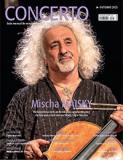
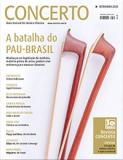
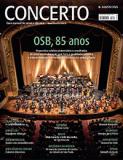
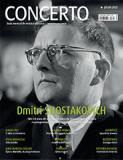

Comentários
Os comentários são de responsabilidade de seus autores e não refletem a opinião da Revista CONCERTO.